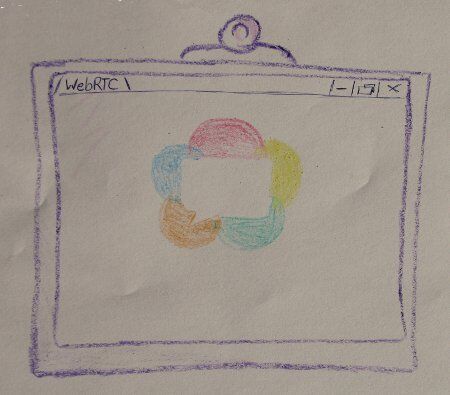With WebRTC as the new disruption of communication, the room system is about to undergo a major overhaul.
So we have WebRTC and it allows video calling to reside in the browser. This is going to change enterprise video conferencing as we know it. It is only a matter of time. But what does that mean exactly?
Let’s talk a bit about the video conferencing room system: the pillar of the enterprise video conferencing industry for over a decade.
The “Classic” Room System
The room system today is built out of 3 major pieces:
- Proprietary hardware: a “codec” box with the brains of the system, which includes multimedia processors and some other surprises, an external camera or two and a microphone pod.
- Embedded operating system to run everything. It was VxWorks in the past, but in recent years it made way for Embedded Linux of all flavors.
- The software, which was… proprietary, but implemented using standards – mainly H.323.
Everything was interoperable. On the surface at least. And the main problem was the fact that this was a small market for a small set of players – at all times, you could fit them all into the fingers of a single hand.
The solutions interoperated, but the end result was still installations of islands: you install the system in your company, and you can connect employees from different offices in video calls. Want to call a potential partner? Dream on.
The WebRTC Room System
The WebRTC room system will look a lot different. The reason for that is the fact that it will be designed and built with flexibility and openness in mind.
As WebRTC doesn’t really “care” about the signaling part of the call, this means that a WebRTC room system mustn’t care either. How do you achieve that? By introducing the web browser as part of the system: you integrate a WebKit web browser into the room system software stack, and make sure it can run WebRTC – you can, if you want, optimize this one for better performance – but at the end of the day it will simply run WebRTC.
Signaling is a non-issue – you simply “surf” to the page of your conference call, and everything is handled from there – it is up to the server hosting the specific call to deal with all of the signaling part.
It also means that the operating system may change as well. If I had to build such a system, I’d go with an Android operating system. It has several advantages over anything else:
- It is the most advanced “Embedded Linux” distribution out there
- It comes with WebKit built into it
- It allows for third party application development – with a huge ecosystem in place already
The only problem with Android is the need for chipsets that already include it – don’t ever ever ever try porting it on your own – it isn’t worth the effort.
So you get to the hardware part, where proprietary hardware is going to be replaced with commodity hardware – mostly the higher end of the smartphone chipsets.
So how will we handle it now?
- Commodity hardware, probably still with proprietary cameras
- Android operating system
- WebRTC multimedia and a web browser for signaling and everything else
How will that change the industry then?
- No more islands. You will be able to call anyone in any way you wish, as long as they support WebRTC
- Invitations will be web based. A single URL and you are in your designated call
- You will be able to customize the look and feel of the call and the room system itself by playing around with Android applications and web pages
It will also decouple the software from the hardware of a room system: a video conferencing room system becomes just another commodity IP phone. The software smarts heads towards web servers handling WebRTC calls instead.


Nice post! I’m still at Enterprise Connect, where the subject was actively debated 🙂
Couple of comments:
“No more islands. You will be able to call anyone in any way you wish, as long as they support WebRTC” – you just defined an island for those who support WebRTC – everybody else are left on their own islands. 🙂
But as far as dialing is concerned, I think you are absolutely right – in order to contact me, you would only need to find my web page – there you will have the links to collaborate and interact with me, know my presence and availability and so on.
It will be cool, and it is becoming a reality.
Cheers!
Anatoli
Anatoli,
Thanks for the comments! Indeed those not using WebRTC are left out of this island, but it is a different one: it is an HTML5 “island”, where the boundary isn’t defined by an installation of a specific deployment for an enterprise or the breadth of offering of a specific vendor hosting a video conferencing cloud.